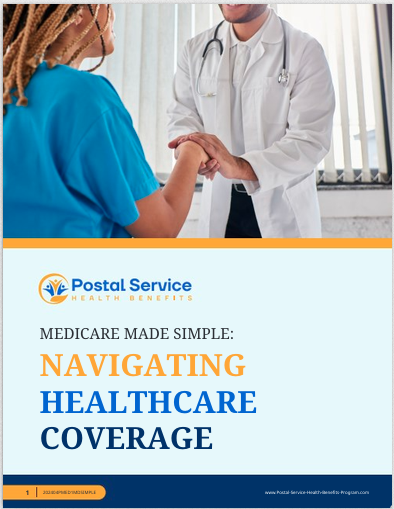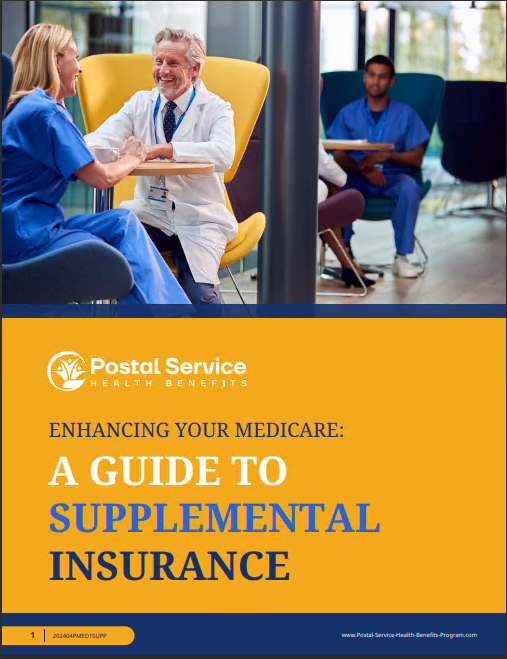Key Takeaways
-
Medicare Part A plays a crucial role in reducing your financial burden for inpatient hospital stays, covering many costs that would otherwise overwhelm you.
-
Understanding how Part A integrates with Postal Service Health Benefits (PSHB) ensures that you can maximize your coverage and protect your health and wallet.
What Does Medicare Part A Cover for Inpatient Care?
Medicare Part A, also known as Hospital Insurance, is your safeguard against the high costs of inpatient hospital care. As a Postal Service Health Benefits (PSHB) enrollee, you might wonder how this essential part of Medicare works to support you during hospital stays. Part A covers:
-
Hospital Stays: Includes semi-private rooms, meals, and general nursing care.
-
Skilled Nursing Facility (SNF) Care: Offers short-term care following a hospital stay of at least three days, provided it is medically necessary.
-
Hospice Care: Provides comfort and support for terminally ill patients and their families.
-
Home Health Services: Includes limited, medically necessary home health care, such as therapy or part-time nursing care.
While Medicare Part A handles these major areas, understanding your out-of-pocket responsibilities and benefits is equally vital.
How Medicare Part A Protects Against Unexpected Costs
Hospital stays can be financially draining without proper coverage. Part A significantly reduces the financial impact by covering many inpatient costs. Here’s how it protects you:
1. Inpatient Hospital Deductible
For each benefit period, you’re responsible for a deductible before Medicare coverage begins. This resets if there’s a 60-day gap between hospital stays. By budgeting for this deductible, you can avoid surprises.
2. Coinsurance for Extended Stays
After the first 60 days of a hospital stay, Medicare Part A requires coinsurance payments. However, this cost-sharing structure ensures that you’re not solely responsible for prolonged hospital care. From day 61 to day 90, the daily coinsurance rate applies, followed by higher costs for lifetime reserve days.
3. Skilled Nursing Facility Care
Medicare covers up to 100 days of skilled nursing care per benefit period. The first 20 days are fully covered, and coinsurance applies for days 21 through 100. This provision helps you recover without financial stress.
The Role of PSHB in Complementing Medicare Part A
Your Postal Service Health Benefits plan is designed to work alongside Medicare Part A. When enrolled in both, PSHB can cover some of the costs that Medicare doesn’t, like coinsurance or deductibles. This coordination ensures comprehensive protection. Here’s how the two work together:
Reducing Out-of-Pocket Costs
PSHB plans often offer coverage for some of the expenses Medicare Part A leaves behind. For example, they might help with:
-
Deductibles for hospital stays
-
Coinsurance for extended hospital or SNF care
-
Costs beyond lifetime reserve days
By using PSHB and Medicare Part A together, you minimize unexpected costs and gain peace of mind.
Seamless Integration for Retirees
For PSHB enrollees who are Medicare-eligible, most plans automatically coordinate with Medicare. This means claims are processed efficiently, reducing your involvement and ensuring smooth coverage transitions.
Timing Matters: Benefit Periods and Cost Management
Understanding the concept of a benefit period is key to managing costs effectively. A benefit period begins the day you’re admitted as an inpatient and ends after 60 consecutive days without hospital or SNF care. This timing affects:
-
Deductibles: Payable per benefit period, not annually.
-
Coinsurance: Applies for stays extending beyond 60 days.
By tracking your benefit periods, you can anticipate costs and avoid overlapping expenses.
Strategies to Maximize Your Coverage
Getting the most out of Medicare Part A and PSHB requires proactive planning. Here are some strategies:
1. Enroll in Medicare on Time
Your Initial Enrollment Period (IEP) begins three months before you turn 65 and ends three months after. Timely enrollment prevents late penalties and ensures your coverage aligns with PSHB benefits.
2. Understand the Costs Medicare Doesn’t Cover
Medicare Part A doesn’t cover everything. For example, private rooms, personal items, and long-term care fall outside its scope. Familiarize yourself with these gaps to avoid unexpected bills.
3. Use Preventive Services
Although Part A focuses on inpatient care, Medicare as a whole offers preventive services that keep you healthy and potentially reduce the need for hospital care. PSHB often includes additional preventive care options, so take advantage of these benefits.
4. Stay In-Network When Possible
Many PSHB plans provide additional savings for using in-network providers. While Medicare doesn’t restrict hospital choice, your PSHB plan might offer lower cost-sharing for network facilities.
Planning for Future Healthcare Needs
Healthcare needs change over time. Planning now ensures you’re ready for unexpected situations. Here’s what to consider:
Evaluate Your Coverage Annually
During Open Season, review your PSHB plan to ensure it still meets your needs. Consider changes to:
-
Deductibles
-
Coinsurance rates
-
Out-of-pocket maximums
Save for Healthcare Expenses
Even with comprehensive coverage, setting aside funds for healthcare expenses like deductibles, coinsurance, and uncovered services is wise. Health Savings Accounts (HSAs) or similar tools can help if you’re eligible.
Know Your Options for Long-Term Care
Medicare Part A doesn’t cover long-term care. Explore options like private insurance or Medicaid planning to address this potential need.
Why Postal Service Employees and Retirees Need Both Medicare and PSHB
As a postal service employee or retiree, the combination of Medicare Part A and PSHB gives you a powerful safety net. Together, they:
-
Offer extensive coverage for hospital and skilled nursing care
-
Minimize out-of-pocket costs
-
Provide peace of mind during health crises
The integration between these programs ensures you’re prepared for life’s unexpected medical events.
Ready to Protect Your Health and Budget?
When it comes to inpatient hospital care, Medicare Part A is your first line of defense, while your PSHB plan fills in the gaps. By understanding how these benefits work together, you can make informed decisions and focus on what matters most—your health and well-being.







